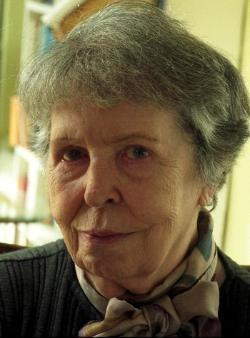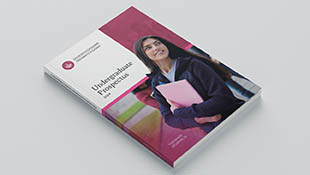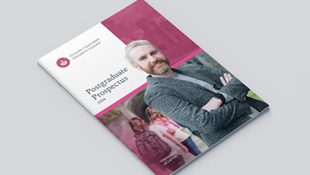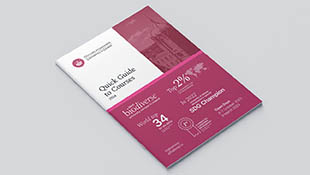-
Courses

Courses
Choosing a course is one of the most important decisions you'll ever make! View our courses and see what our students and lecturers have to say about the courses you are interested in at the links below.
-
University Life

University Life
Each year more than 4,000 choose University of Galway as their University of choice. Find out what life at University of Galway is all about here.
-
About University of Galway

About University of Galway
Since 1845, University of Galway has been sharing the highest quality teaching and research with Ireland and the world. Find out what makes our University so special – from our distinguished history to the latest news and campus developments.
-
Colleges & Schools

Colleges & Schools
University of Galway has earned international recognition as a research-led university with a commitment to top quality teaching across a range of key areas of expertise.
-
Research & Innovation

Research & Innovation
University of Galway’s vibrant research community take on some of the most pressing challenges of our times.
-
Business & Industry

Guiding Breakthrough Research at University of Galway
We explore and facilitate commercial opportunities for the research community at University of Galway, as well as facilitating industry partnership.
-
Alumni & Friends

Alumni & Friends
There are 128,000 University of Galway alumni worldwide. Stay connected to your alumni community! Join our social networks and update your details online.
-
Community Engagement

Community Engagement
At University of Galway, we believe that the best learning takes place when you apply what you learn in a real world context. That's why many of our courses include work placements or community projects.
Adjunct Positions
John McGahern
-250x208.jpg) The late John McGahern, had a long and productive relationship with NUI, Galway stretching back to the inaugural Summer School in Irish Studies in 1984. While his reputation flourished, both nationally and internationally, in the intervening years, he continued to contribute to the Summer School until his untimely death in March 2006. In 1994, he was awarded an honorary Doctorate in Literature by the University and, in January 2001, he was appointed Adjunct Professor of Irish Studies in recognition of a lifetime of creative achievement at the highest level. In October 2003 Professor McGahern bestowed his literary archive on the University. This material, which will provide an invaluable resource for generations of future scholars, consists of forty years of writings, personal papers, correspondence and the manuscript of an unpublished novel. It includes the manuscripts of The Dark, The Barracks, Amongst Women, That they may face the rising sun, and Memoir. The collection provides a unique insight into the working methods and technical development of one of the most meticulous and scrupulous Irish writers of our time.
The late John McGahern, had a long and productive relationship with NUI, Galway stretching back to the inaugural Summer School in Irish Studies in 1984. While his reputation flourished, both nationally and internationally, in the intervening years, he continued to contribute to the Summer School until his untimely death in March 2006. In 1994, he was awarded an honorary Doctorate in Literature by the University and, in January 2001, he was appointed Adjunct Professor of Irish Studies in recognition of a lifetime of creative achievement at the highest level. In October 2003 Professor McGahern bestowed his literary archive on the University. This material, which will provide an invaluable resource for generations of future scholars, consists of forty years of writings, personal papers, correspondence and the manuscript of an unpublished novel. It includes the manuscripts of The Dark, The Barracks, Amongst Women, That they may face the rising sun, and Memoir. The collection provides a unique insight into the working methods and technical development of one of the most meticulous and scrupulous Irish writers of our time.
McGahern’s Ireland
The progress of John McGahern’s career gives some indication of the uneasy relationship that properly exists between the writer and the State. Dismissed from his position as a schoolteacher following the publication of his second novel, The Dark, in 1965, McGahern moved to London where he worked as a part-time teacher and builder’s labourer. He subsequently spent time as professor of literature and writer in residence at universities in the United States and in England before returning to Ireland to live. During his enforced absence, McGahern produced some of the most important and influential works in modern Irish fiction, including The Leavetaking, The Pornographer, Nightlines and Getting Through.
While The Dark dealt in an uncompromising way with the difficulties of adolescence in a repressive society, Amongst Women is equally candid in its appraisal of the emotional tyranny of the central character, Moran, a man capable of heroic action in a time of revolution but incapable of meeting the demands of domestic and personal intimacy in his fraught and sometimes violent relationships with the women in his life and with his own children. The extent and integrity of McGahern’s achievement gained him enormous public recognition in Ireland, with his election to Aosdána and a succession of literary awards including the Irish Times Fiction Award and a nomination for the Booker Prize.
His last novel, That they may face the rising sun, celebrates the lives of a rural Irish community whose social interactions are intimately connected to the rhythms of the natural world which sustains them. It was hailed as a modern masterpiece with one commentator being moved to declare himself envious of anyone who had yet to read it for the first time.
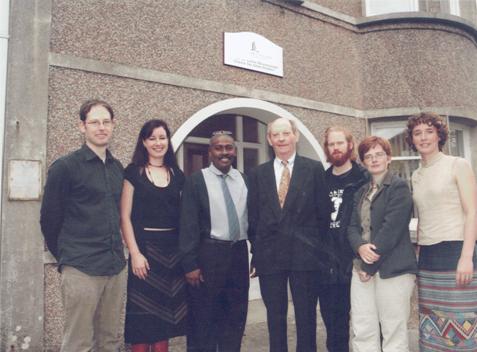
The generosity and good humour which characterized Professor McGahern’s relationship with staff and students was evident again when he formally opened the refurbished premises of the Centre for Irish Studies at Martha Fox House in October 2005.
Máire Mhac an tSaoi
’Agus mé im’ greachaile,’ adúirt sí,’
’Chreidinn go raibh na Flaithis
Lán de chumhracht na meala
Agus na mísmín
Agus d’aer na farraige.
Anois gabhaim leor le grá Dé!
Máire Mhac an tSaoi
In Spring 2005, the distinguished poet Máire Mhac an tSaoi was appointed to the position of Adjunct Professor of Irish Studies at NUI, Galway. Máire Mhac an tSaoi is one of a handful of major poets who transformed poetry in Irish in the period during and after the Second World War. Her work is particularly significant in that it anticipates the emergence of women’s voices at the forefront of Irish poetry in both Irish and English during the 1970s and 80s. A generation before the groundbreaking achievements of Nuala Ní Dhomhnaill, Eavan Boland and others, and in more daunting circumstances, Máire Mhac an tSaoi’s poetry speaks to and from the intimate experience of women at a time when women’s voices were marginalized both in literature and in Irish society. Her most famous poem ’Ceathrúintí Mháire Ní Ógáin’, is a powerful challenge to the orthodox morality of Ireland in the 1940s and subsequent decades:
Beagbheann ar amhras daoine,
Beagbheann ar chros na sagart,
Ar gach ní ach a bheith sínte
Idir tú agus falla-
I care little for people’s suspicions,
I care little for priests’ prohibitions,
For anything save to lie stretched
Between you and the wall-
The intellectual integrity and emotional independence that characterise her poetry is evident again in Máire Mhac an tSaoi’s public life. In reviewing her autobiography The Same Age as the State¸ Seamus Heaney says ’there is truth to experience here, a forthrightness about passion and transgression that is thrilling and exemplary’. Throughout the book, she speaks frankly of her own experience as a civil servant and career diplomat during a period of dramatic change and political turbulence in Ireland, Europe, and the developing world. During her time in the Department of External Affairs, she was, in her own words, the ’token woman’ on Ireland’s first delegation to the United Nations. As chargé d’affaires at the Irish Embassy in Madrid, she was invited to the Palacio del Oriente, where she met with General Franco, an experience she describes as ’both baroque and absurd’. She also spent time with her husband Conor Cruise O’Brien in the Congo, Ghana, and elsewhere in dramatic times and dangerous circumstances. One of the most powerful passages in The Same Age as the State recounts a violent incident in Katanga and an apparent attempt to assassinate Dr O’ Brien.
While she is highly regarded by other poets and by critics, the full extent of Máire Mhac an tSaoi’s contribution to twentieth-century Irish literature and politics has yet to be fully appreciated and acknowledged. In recognition of her achievement, as a groundbreaking poet and as a public figure who participated significantly in some of the key moments of recent Irish, European, and world history, her appointment to this honorary position is a very welcome one.
From ’Contemporary poetry in Irish 1940-2000’, Louis de Paor, pp 325-8, The Cambridge History of Irish Literature Vol II: 1890-2000, edited by Margaret Kelleher & Philip O’Leary
The most consistent challenge to the prevailing moral consensus of the 1940s and 50s is contained in the work of Máire Mhac an tSaoi (b. 1922) which, on occasion, admits the absolute nature of female desire as a threat to the prevailing social and moral order. While the women whose subversive integrity is invoked in ’AthDheirdre’ and ’Gan Réiteach’ appear careless of the consequences of their unappeasable desire, the author’s dedication of her first collection, Margadh na Saoire (1956) ’don té a léifidh le fabhar’ (to the well-disposed reader) indicates a certain apprehension as to the sanction her work might provoke. The need for discretion is further evident in the organisation of the poems into different categories under the headings of ’Liricí’ (lyrics), ’Eachtraíocht agus amhráin tíre’ (tales and folk songs) and ’Aistriúcháin’ (translations). That this is not merely a scholarly convenience or a hangover from her academic work is evident in the progress of the work itself from one section to another. While the lyric poems are more or less orthodox in form and sentiment, the personae through which her poetic voice articulates itself in the imitations of traditional folk models allow a more subversive ethic to gradually assert and distinguish itself from the anonymity of pastiche. The transgression is most clearly voiced in the final section of the book in her translation of Lorca’s ’An Bhean Mhídhílis’ (The Unfaithful Wife) as though such immorality might be tolerated only at a historical and geographical remove.
While Mac an tSaoi’s imitation of the forms and poetic diction of earlier phases of Irish poetry from the bardic period through to the folk songs familiar to her from extended childhood visits to Dún Chaoin has been criticised as pastiche, the almost classical rigour of her language also provides a cover for a more subversive enterprise, deflecting attention from the challenge posed to standard morality in her most achieved work. The ventriloquism that allows an alternative morality to be articulated through a mask may be a necessary subterfuge, a strategy which allows otherwise prohibited emotions to be expressed discreetly. The near anonymity of the initial ’M’, the signature to her earliest published work in Comhar, which conceals her gender as well as her personal identity, is another form of subterfuge that allows the otherwise unspeakable its say. Her work, in any case, is more conflicted than is immediately apparent. That her most famous poem, ’Ceathrúintí Mháire Ní Ógáin’, [i] should be attributed to a persona whose name is synonymous with the folly of young women is, to some extent, a corrective to the transgression enacted in the course of the poem where the world extends no further than the edge of the bed and the woman abused in love declares herself careless of people’s suspicion and of clerical prohibition. Although she prays God to liberate her in the opening line of the poem and declares her desire to conform to the established moral order, she reiterates in the closing verses her willingness to repeat the transgression even as she repents her original sin.
That tension between individual desire and conventional values is central to Máire Mhac an tSaoi’s poetic method. The orthodox sentiments expressed in many of her poems are less a genuflection to the prevailing moral codes than an indication of the ambivalence and confusion dramatised in her best work. The nationalist sentiment of her elegy for an executed sixteenth-century Irish chieftain, ’Inquisitio 1584’, is moderated in the later ’An Fuath (1967)’ where she reminds herself and the reader that hatred which blooms in conflict might also sustain a garden built on sand-dunes between two tides ’mar a maireann ár mná ’s ár bpáistí’ (where our wives and children live). The conflict in the North provokes an even more fundamental realignment in ’Fód an Imris: Ard-Oifig an Phoist, 1986’. The reverence of ’Oíche Nollag’ and ’Amhrán Céad Chomaoine’ is countered by a fundamental doubt and half-belief in ’Bás mo Mháthar’ while an uneasy reconciliation is effected in ’Moment of Truth’ when the ultimate question as to God’s existence posed by a dying woman is answered with less than wholehearted conviction: ’Am briathar ná feadar/Ach nach mór dom creideamh na gcomharsan/mar mhapa chun go mbreacfainn marc air’ (I honestly don’t know/only that I need the neighbours’ faith/as a map I can leave a mark on).
The powerful female antecedents whose exemplary courage she is incapable of or unwilling to follow in ’AthDheirdre’ and ’Gan Réiteach’ provide the heroic model for ’Adhlacadh Iníon an Fhile’ where death is preferable to old age and, indeed, for a poem of homage to Nuala Ní Dhomhnaill, ’Do Nuala Ní Dhomhnaill’, whose achievement might be seen as a vindication of some of the more transgressive elements in her own work. The emergence of a subsequent generation of women poets in Irish may account, in part, for the growing conviction of the dramatised ’I’ in Máire Mhac an tSaoi’s later collections where she flouts the standard conventions of authorial discretion by exploiting the overlap between her public and private personae. In addressing by their proper names members of her immediate and extended family and others, she provokes the reader to relate her poems to the known details of her intimate but nonetheless public life. Despite the conventions of contemporary critical practice which would disallow such a conflation of biography and poetry, her later work exploits common knowledge of the domestic details of her private life to produce work that allows the intimate to infiltrate the public, to reorder and rewrite it from within.
Although her work has been sporadic, a measure, perhaps, of the difficulty of sustained innovation, the most persistent aspect of her achievement is the precedence given to the intimate and the domestic in her poems. Long before the publication of Eavan Boland’s groundbreaking volume in English, Nightfeed (1982), which placed the nursing mother and her infant child in a nighttime suburban kitchen at the heart of a poetic universe, Máire Mhac an tSaoi had effected a similar revolution in the language and thematics of poetry in poems such as ’Do Shíle’, ’An Chéad Bhróg’ and ’Comhrá ar Shráid’. The same reversal of values informs later poems such as ’Do Mháiréad sa tSiopa Cóirithe Gruaige’, and ’Codladh an Ghaiscígh’ where the baroque language is matched by unusual intensity and intricacy of feeling. The central ambivalences of her work and the integrity of her own refusal to effect a facile reconciliation between them is still evident in her most recent poems where she continues, despite her own stated religious convictions, to celebrate the independence of women who refuse to be intimidated by the authority of the Church and its moral sanctions. There is a further emotional complication in the more intimate poems as the passage of time causes a deepening tenderness in filial relationships on the one hand and a growing horror on the other at the imminence of physical disintegration, barely assuaged by the consolation of Christian belief. The integrity of her achievement, her subtle interrogation and gradual subversion of prevailing orthodoxies, and her influence on the generation of women poets who emerged in the 1980s has been considerable although understated and, perhaps, insufficiently acknowledged.
[i] According to tradition, Máire Ní Ógáin was the mistress of poet Donnchadh Ruadh MacConmara (1715-1810).








